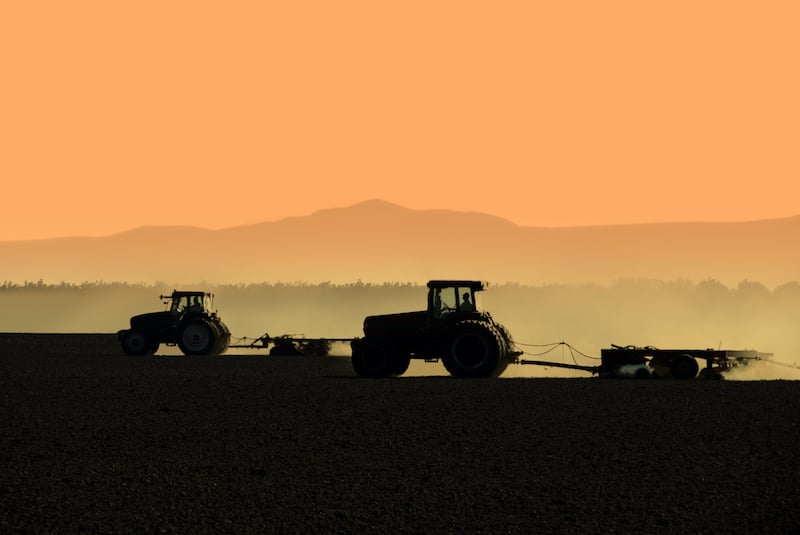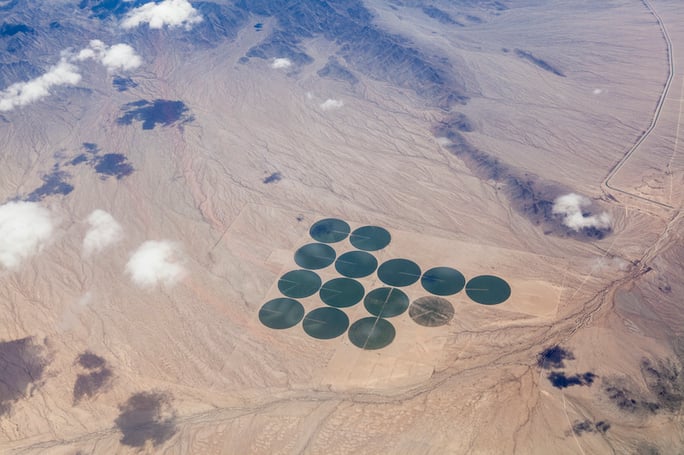A slimmed-down version of the legislation formerly known as the Build Back Better Act was signed into law in mid-August 2022. Agriculture spending is just a fraction of the overall price tag for the final Inflation Reduction Act (IRA)—but it still has the potential for far-reaching impacts on the sector.
But what does the act actually mean for California farmers? Here's a rundown of key provisions and possible next steps.
A big boost for voluntary conservation programs
The final bill includes nearly $38 billion for agriculture, forestry, and rural development, with the biggest chunk of spending going toward working lands programs already in use by California farmers and ranchers. The funding boost should help to address the large backlog of interested and eligible producers that have been waiting to enroll.
Affected programs include:
Environmental Quality Incentives Program (EQIP): $8.45 billion
EQIP is a voluntary program administered by USDA’s Natural Resource Conservation Service (NRCS) that provides financial and technical assistance to help farmers implement conservation practices like mulching and irrigation water management.
regional conservation partnership program (rcpp): $4.95 billion
The 2018 Farm Bill updated RCPP to be a standalone, cooperative program between NRCS and other partners to address on-farm, watershed, and regional natural resource concerns. The California Bay Delta and Colorado River Basin are two critical conservation areas identified as priorities for RCPP funding.

conservation stewardship program (CSP): $3.25 billion
CSP offers farmers the opportunity to earn payments for implementing and expanding conservation activities like cover crops or rotational grazing, or for transitioning to organic production.
agricultural conservation easement program (ACEP): $1.4 billion
ACEP prevents the conversion of productive working lands to non-agricultural uses. Land protected by agricultural land easements also provides wildlife habitat and protects open space.
For each of these programs, the Inflation Reduction Act does three things: reauthorizes the program through FY 2031, appropriates new money for FY 2023-2026, and attaches climate change-related provisions. Given that the USDA currently spends a total of only $4 billion annually on all voluntary conservation programs excluding the Conservation Reserve Program (CRP), it’s clear that the IRA should substantially increase opportunities for eligible growers to participate.
Short- and long-term drought relief strategies
To secure enough votes to pass the Senate, $4 billion was added to the IRA to help address the ongoing challenge of drought in the West. The drought portion of the reconciliation bill includes three key components, each of which could impact farmers and ranchers:
- Compensation for water users, including those in the agriculture sector, for voluntary water use reductions.
- Funding for conservation projects to increase water levels in the Colorado River system, including investments to improve urban and agricultural water use efficiency.
- Funding for environmental restoration projects to help mitigate the harmful effects of drought.

Western agriculture groups expressed support for the addition of the drought relief provisions. “Not only does the Colorado River supply the water and power needs of nearly 40 million people across the West, it sustains the agricultural output of Yuma, Arizona and California’s Imperial Valley. Without fast and serious federal assistance, a significant portion of the nation’s food supply hangs in the balance,” Western Growers President & CEO Dave Puglia said in a press release.
California Senator Dianne Feinstein's office says that the provisions "could benefit farmers or groups of farmers who volunteer to fallow a portion of their land for multiple years," noting that the compensation might assist California farmers in particular in planning for compliance with the Sustainable Groundwater Management Act.
Looking ahead to the 2023 Farm Bill
With the IRA now signed into law, the focus now shifts to implementation. It is unclear if USDA will use a formal rule-making process to collect public input before making programmatic updates or distributing the funds. Producers should stay in touch with NRCS and watch closely for opportunities to weigh in.
Both the House and Senate Agriculture Committees are currently collecting feedback from stakeholders about their priorities for the 2023 Farm Bill. Support for conservation programs like EQIP has come up during recent farm bill listening sessions held by the California Department of Agriculture (CDFA).
Big questions also remain about how the next farm bill may affect the rollout of IRA funding. Most of the new funds will not be spent before the farm bill is reauthorized in 2023—which provides an opportunity for Congress to potentially reallocate or rescind funding, or to make policy updates to USDA conservation programs. The 2022 midterms could have a big impact on the timing and policy focus of the next farm bill. However, even if the farm bill expires before it is due to be reauthorized, programs covered by the IRA should remain funded and functional.
